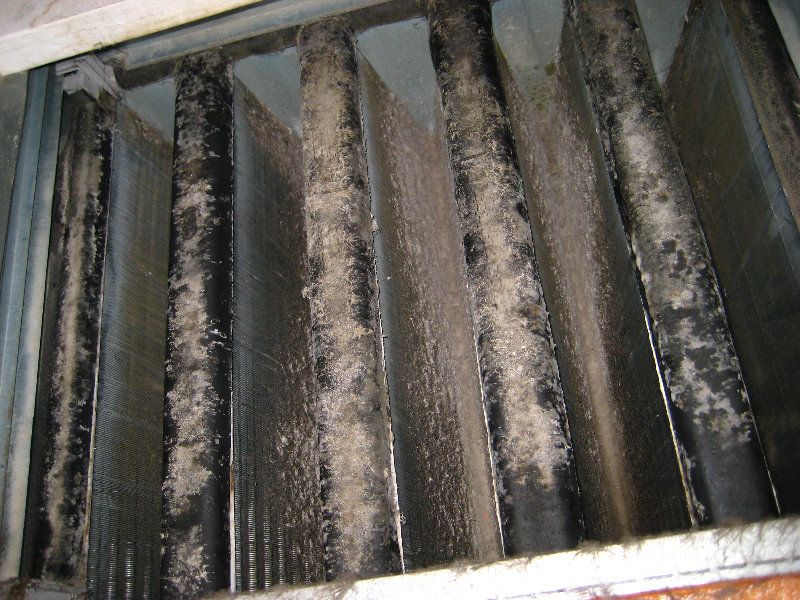Coil Failures – Look Before You Leap!

More than 85% of all coil failures occur prematurely. This means very few coils ever achieve the longevity that was originally intended. There’s always a rhyme and a reason for every coil failure, and most can be identified based on experience and coil application science. Let’s take a closer look at coil failures – noting which ones can be identified quickly and which ones may need a more exhaustive review and investigation.
Simple Coil Feature Diagnosis
- Coil freeze damage – Noted by the bloating of a tube or return bend area with a crack located at or near the center of the bloated area. The bloat is the tube trying to deal with the added internal pressure from a freeze event and the crack is that this pressure increased to a point that the coil couldn’t contain the pressure.
- Salt laden atmosphere coil damage – noted by a white or discolored ring around the tubes and upon close inspection then aluminum fin erosion from the tube itself. Advanced salt problems can have almost white dust throughout the tube-fin pack. If the coil is located anywhere near a salt laden air type of atmosphere, then this is deemed salt damage.
- Dirt laden coils – This is simple because the air flow through very dirty coils has two symptoms. The system air flow has been reduced and the leaving velocity on the exit side of the coil is not within plus or minus 10 percent. When a coil loads with dirt then it doesn’t load uniformly. This then means there will be higher air velocity pockets and lower ones. Air travels to the path of least resistance.
- Condenser coil fouling – All condenser coils are very high in fins per inch and do not have a filter on its entering air side . This unique HVAC installation then leads to coil loading from either dirt or many times if cleaned then the agent destroys the coils. Loaded coils against a propeller fan that doesn’t deal with extra resistance can’t pull its weight in the refrigeration loop and can cause compressor failures if left unfixed.
- Vibration leaks at the tube sheet of a coil – This is more predominate in condenser coils due to radiating vibration from either the compressor or the condenser fans or both. The design of today’s packaged units, including large condensing units and chillers, have very marginal structure in and around the vibrating equipment which creates premature failure of coils at the tube sheets.
Complex Issues and Failure Diagnosis
- Fluid side fouling – whether it be water, glycol mixture, steam/condensate or some other heat transfer fluid, there’s always the chance that a corrosive agent is now destroying your coil. This can happen with new systems, because the fluid is untreated; or over time, the treatment can change the solutions to corrosive. Holes may also appear due to a corrosive agent being present, along with thermal expansion and pressures of the heat exchanger.
- Air side fouling – This can happen in common HVAC systems that may be close to an industrial atmosphere or a process coil that’s being fed corrosive air that destroys the coil over time. There are a multitude of foreign agents that can be a part of this equation creating the need for an in-depth analysis to identify the culprit.
Metallurgical Analysis
This is the “look before you leap section” of this newsletter. Many times, specific questions need to be asked and answered before it can be determined why a coil has failed. If a foreign agent has advanced in the system, or if it’s a misapplication of coil materials causing premature coil failure, most owners will want to know what created the problem. Unlike most analyses, some of these questions and answers can’t be defined and proven by a visual inspection.
Sometimes the corrosive agent was always present, but over time, it’s increased in volume to a point that it’s corrosive to the material creating premature coil failure. Case in point – many systems where fluid is treated (water, glycol, or steam) can have corrosive agents added in the treatment process, and you don’t see the coil failures for years.
Personally, I have seen hundreds and hundreds of steam heating systems where a coil has been free of leaks for 10 years and in years 11, 12 and 13 have massive leaks. It’s because the first 10 years the corrosive agent wasn’t at a level to cause leaks but now it is.
We have attached a sample of a professional metallurgical analysis that shows the treatment company used the wrong chemicals on the coils. They assumed the steam only fed the stainless steel heat exchanger and didn’t realize that the copper steam coils on the roof that heat the plant air were also in the steam loop.
We have used M. E. Williams in Waseca, MN for many years. Based on his extensive knowledge and years of experience dealing with coil manufacturers, he is very familiar with the problems of finned tube coils. What’s more important is that his reports are very precise and thorough. With the evidence available, he will most likely be able to give you conclusive findings, which gives you an opportunity to fix systematic problems or order new coils that will withstand the actual application.
Southwest Coil can help you gather evidence to provide M. E. Williams, or you can go directly to them if your problems need this service. From decades of experience, we know that accurate knowledge of the problem is the first step to solving it. We have the products to prevent premature failure – you will need to provide us with the specific information to determine the best solution.


